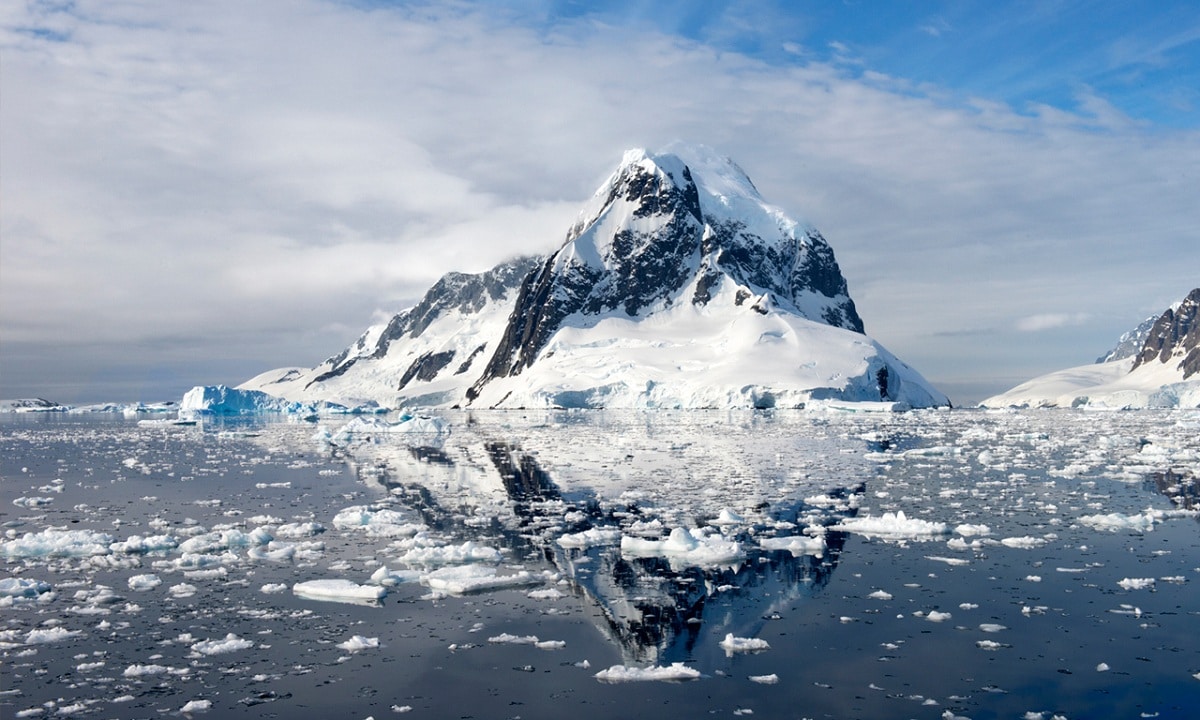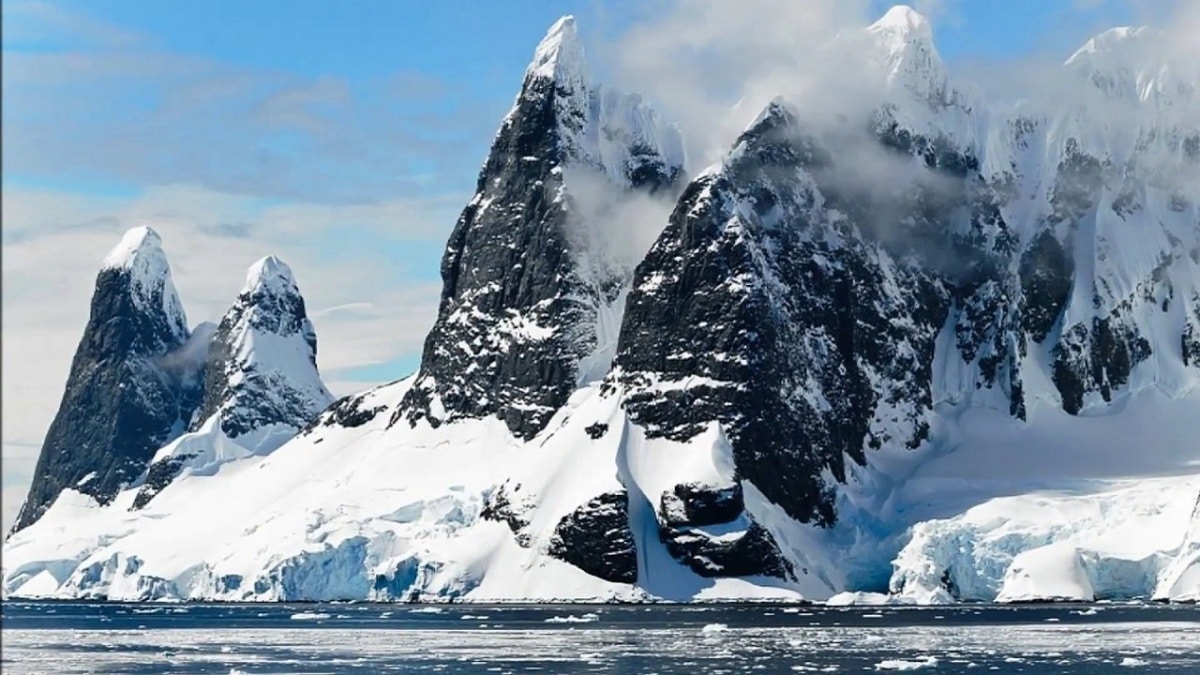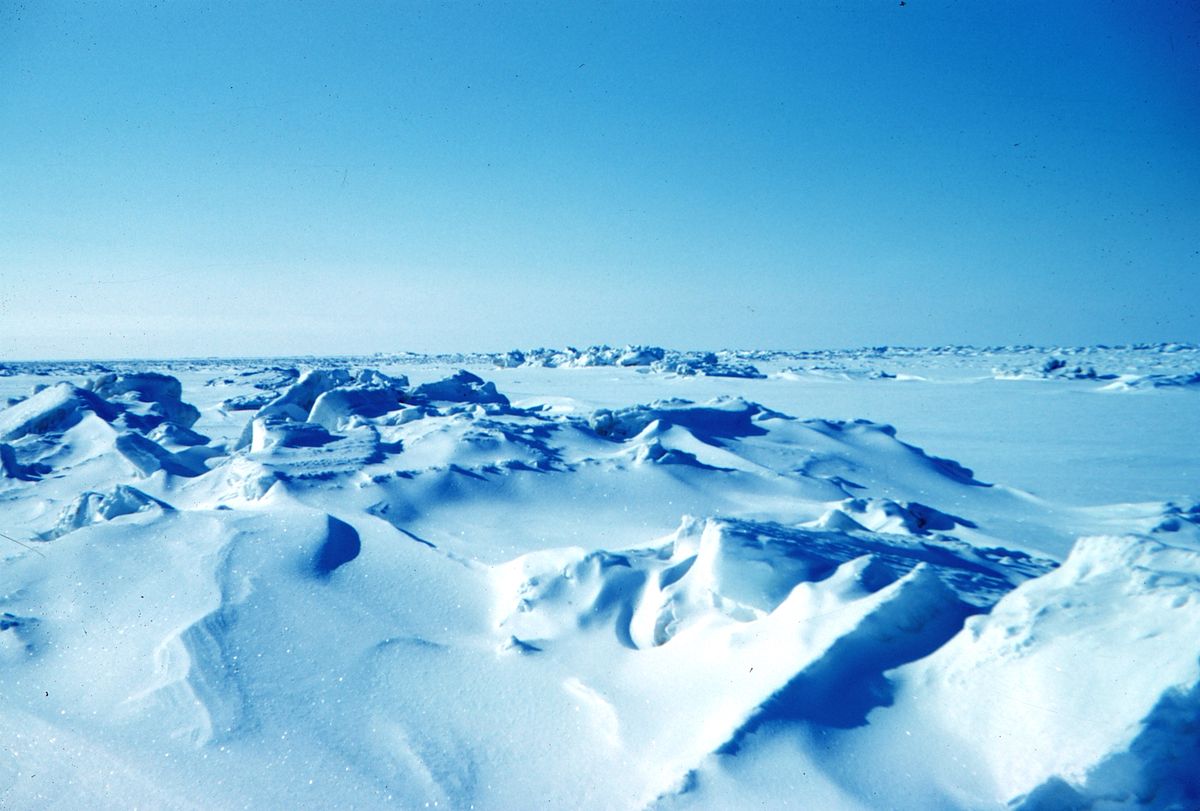
Climate change is casting much doubt on scientific discoveries about the glaciations. And the thing is that in 2004 we had a quite cold winter, with little rainfall and with forest fires that spread throughout the world. These facts created a debate within science about atmospheric cycles and the possible risks that are associated with this climate change. There are those who are in favor of the fact that global warming is not something that humans are causing, but that it corresponds to one of the cycles of eventual glaciation that our planet has from time to time.
In this article we are going to tell you everything you need to know about glaciations and their relationship with climate change.
Oscillations in temperatures

It is known that during the last century the planet's climate has experienced an increase in its average temperatures. This is due to the increase the concentration of carbon dioxide and other greenhouse gases with the capacity to retain heat in the atmosphere. The problem is that there are people who say that our planet has cycles of glaciations. It is true that throughout the evolution of our planet there have been cycles of glaciations and inter-glacial periods. However, the problem begins when we set the variable to analyze the speed of these glaciations and of global warming prior to them.
As can be seen in a chronology of the glaciations, which we will see later, the time that elapses between one glaciation and another is long enough for all animal and plant species and the morphology of ecosystems to adapt to changes in the environment. In this case, we are talking about an increase in global average temperatures in too short a period. Such a short period and the species do not have time to adapt and they begin to reduce their populations. Such is the reduction in populations that many of them have become extinct.
In order to dispel all doubts, we are going to put on the table some certainties about the past and the scientific findings discovered. These findings bring together all the natural mechanisms that seem to influence the evolution of the planet's climate. It must be taken into account that, independently of the influence of human activity, scientists admit as the main natural causes of climatic fluctuations the great glaciations with the wobble of the Earth's axis of rotation. Changes in the Earth's orbit around the sun have also been added to this. This is because the entire set of movements modifies the distribution of energy that our planet receives from the sun.
Ice ages and changes in Earth's orbit

In order to know the glacial periods and the inter glaciers, it is necessary to evaluate the average annual temperature from a geological perspective. Milankovitch's theory is the one that justifies that there are changes in the planetary climate after the periodic appearance of Glaciations. It is here that great ice ages and small interglacial periods have appeared. We are currently in an interglacial period.
These periods of glaciations occur because of the combination of 3 cosmic cycles in which the Earth's orbit changes from circular to elliptical and vice versa. There is a record that one of the first cosmic cycles occurred between 90.000 and 100.000 years ago. That's when the earth changed its orbit from circular to elliptical and vice versa. Another cosmic cycle occurred about 26.000 years and determine the wobble of the Earth's axis of rotation. Finally, another cosmic cycle occurred of 41.000 years in which the inclination of the Earth's axis with respect to the plane of orbit oscillates between 22.5 and 24.5 degrees.
Cosmic cycles

All these changes in the movements and the axis of the earth are the main producers of the glaciations. It must be taken into account that the phases in which the orbit of the earth is circular as soon as changes occur throughout the year. However, when the orbit is elliptical, there is a greater proximity at certain times of the year. At present, we know that the orbit of the earth with respect to the sun is elliptical, although it is not at its maximum other than eccentricity. When the earth passes through perihelion, this being the closest orbital point to the sun, it occurs at the beginning of January. This is when it is winter in the northern hemisphere. On the other hand, when it is in aphelion, it is summer in the northern hemisphere, even though it is in its most distant position.
When will the cosmic cycles link this arrangement changes, over a period of time the perihelion occurs coinciding with the austral winter instead of the boreal one. Therefore, it is known that the key to the influence of these orbital changes on the appearance of glaciations agrees with the Milankovitch model. And it is that everything seems to be related to the period in which the orbit is circular and the distance from the earth is hardly varies. In this situation there are no hot summers like the current ones. On the other hand, in the stages in which the orbit is elliptical and has its maximum eccentricity, hot summers like the current ones occur.
When the orbit is more circular It prevents the snow from melting and gradually accumulates year after year. This leads the earth to a new ice age. This is drawn as a conclusion that what determines glaciations are not the harshest winters, but the coolest summers. From this the information is extracted that due to cooler summers, the icy surface will not come from and every year the polar ice caps increase in thickness until the end of an ice age.
Known ice ages on Earth
These are the different glaciations that have known our planet throughout history:
- The first glaciation is known as Huronian. It took place approximately 2.400 billion years ago. It lasted about 300 million years and was the longest of all.
- The second glaciation is known as Cryogenic. It is possibly the most severe and occurred approximately 850 million years ago. It was responsible for the subsequent Cambrian explosion.
- The third glaciation is known as Andean-Saharan. It occurred approximately 460 million years ago.
- The fourth glaciation is named after Karoo and it happened about 350 million years ago.
- In the current glaciation, called Quaternary glaciation, It has seen glacial periods of about 40.000 years.
I hope that with this information you can learn more about the glaciations.
What possibility exists that the movement of the entire solar system around the galaxy, by going through different spatial densities, will increase or decrease the temperature of the entire solar system, including its planets?
Thank you